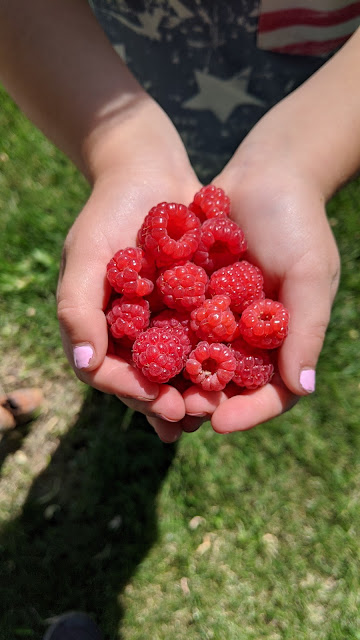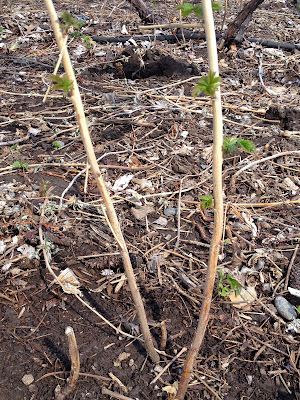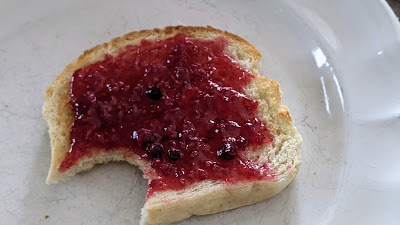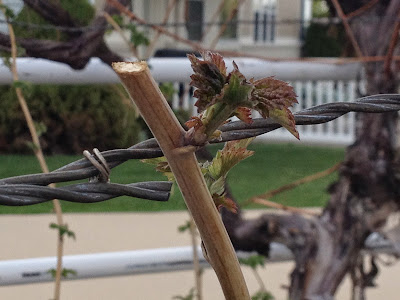Summer-bearing vs. Fall-bearing Raspberries
Producing your own fruit is one of the most satisfying aspects of gardening, and raspberries are an excellent fruit to grow. You just can't beat the juicy sweet flavor of homegrown raspberries. Most of the United States is suitable for growing some sort of raspberry variety. With the right variety for your climate, you can have a large raspberry patch in no time at all. Raspberries are perennial plants divided into two categories:
- Summer-bearing
- Fall-bearing
Before growing raspberries, it's crucial to know the difference between the two types.
Raspberry Anatomy
Raspberry plants will thrive and produce fruit for many years if given proper care. The perennial root systems of this plant are extremely tough, often sending suckers to nearby areas to create new plants. The place where new canes form is called the crown. The roots and crown of raspberries are perennial, while the individual canes are biennial, or in other words, they only live for two summers.
Raspberries have two types of canes, primocanes, and floricanes. Primocanes are produced in the first year of growth. This cane primarily makes vegetative growth, allowing the plant to build up energy for fruit production in preparation for the following season. Primocanes vary in height depending on the cultivar and growing conditions and can get as tall as 8 feet. During the second year of growth, the primocanes produce lateral branches that will flower and fruit. These fruit producing canes with secondary growth are called floricanes. Once floricanes finish fruiting for the season, they will die. It's important to note that some raspberries have fruit on both primocanes and floricanes, depending on the type of raspberry. These varieties are considered ever-bearing. Not because they always produce, but because the the primocanes will start producing fruit at the time the floricanes finish producing.
The flowers on raspberry plants are self fertile, which means pollen from one cultivar can be used on surrounding plants of the same cultivar. Bees and wind are the primary contributors to pollinating raspberry flowers. Primocanes and floricanes usually grow simultaneously on raspberry plants, allowing the plant to fruit each year. You can manage the amount of your fruit production with annual pruning. Summer-bearing and fall-bearing plants have different pruning techniques to balance the number of primocanes and floricanes on each plant, which will aid in determining the quantity and quality of fruit produced. Maintaining a balance of the two types can allow the plant to produce and collect solar energy simultaneously.
For more information about the care and pruning of fruit trees, please subscribe here:
Summer-bearing Raspberries
Summer-bearing cultivars start ripening in June and continue until July. The exact timing of fruit production varies on weather conditions and cultivar. this type of raspberry only produces fruit on floricanes during the second year of growth. The highest quality fruit is produced in the middle part of each cane because this is where the floricanes are receiving the best sunlight and are first to mature.
Summer-bearing raspberries come in red, white, black, and purple color variations. Some variations only produce their unique coloring on canes that grow from the original crown and might be less hardy than traditional red raspberry varieties.
Each cultivar of summer-bearing raspberry has different cold hardiness levels, so make sure you know your growing zone and the growing zone of the raspberry variety you are about to purchase.
Pruning Summer-bearing Raspberries
You can prune summer-bearing plants in late summer or early spring. It's best to wait until after the harvest is finished for late summer pruning, then remove all remaining floricanes because they will die when the season comes to an end. Removing the floricanes removes a potential source of disease and gives the new canes more room to grow in the future. New shoots should be thinned so there is a foot between each cane, one foot above the ground level. This equates to about 3-5 Canes per crown. If pruning in the summer, wait to tip back canes until early spring. To maintain rows 1-2 feet wide, remove all suckers growing in pathways and adjacent landscaping. It is not uncommon for raspberries planted in neat rows to quickly turn into a overgrown patch that is difficult to maintain and harvest from.
You can prune black and purple raspberries by pinching the top of each primocane when they reach 24-30 inches tall. this method will stimulate side shoots that bear fruit. After harvest, the floricanes are removed. The canes from these varieties should be thinned to the same one foot spacing, one foot above ground level, giving preference to the sturdier canes. You can cut back the side shoots of the remaining canes to 12 inches on black raspberries and 18 inches on purple raspberries.
Fall-bearing Raspberries
Fall bearing raspberries differ in several ways from summer-bearing varieties. Fall-bearing plants produce fruit on first-year primocanes. The canes have vegetative growth until midsummer, then produce flowers and fruit. Harvest begins in late summer to early fall, continuing until the first freeze. Because the fruit is harvested late in the season, fall-bearing raspberries should not be grown in areas with short growing seasons due to early fall freeze events that will cut your harvest short. The exact harvest time for fall bearing plants will depend on the cultivar and weather conditions.
Pruning Fall-bearing Raspberries
Depending on your preferences, you can use two methods to prune fall-bearing raspberries. the first pruning method will result in maximum fruit production. the second method give you two harvest periods but a smaller overall yield. The first method involves cutting all the canes to ground level while the plants are dormant. This action can be taken in the late fall, winter, or early spring. You can cut canes with your pruning shears or a mower. Make sure your tools and blades are sharp to ensure a clean cut. Cutting back all the canes to the ground is a quick pruning method and helps reduce disease and insect problems.
The second method involves pruning the plants like summer-bearing raspberries. this method is more time-consuming than the first method. Many fall-bearing cultivars are less hardy, which mean this type of pruning could result in only one harvest if the canes die back during winter. Plant debris should be disposed of after pruning. Removing the debris reduces disease and insect pest problems in the future.
Raspberries are an excellent fruit for homeowners to grow. They can be challenging at times, but with proper care, you can have a thriving raspberry patch of your own. We hope this article helped you decide between summer-bearing and fall-bearing varieties and how to optimize your pruning to maximize yield.
If you would like to learn more about the care and pruning of fruit trees, please browse our 100+ fruit tree articles here, join our Backyard Fruit Growers Facebook Group, and take our free Fruit Tree Pruning Course. Also, please subscribe to our Fruit Pruning YouTube Channel.












good article. Thank you
ReplyDeleteYou're very welcome!
DeleteWhere can I find the free fruit pruning course ?
ReplyDeleteHere is the link. https://simplytreesut.blogspot.com/p/how-to-prune-fruit-trees-in-9-simple.html?m=1
Delete